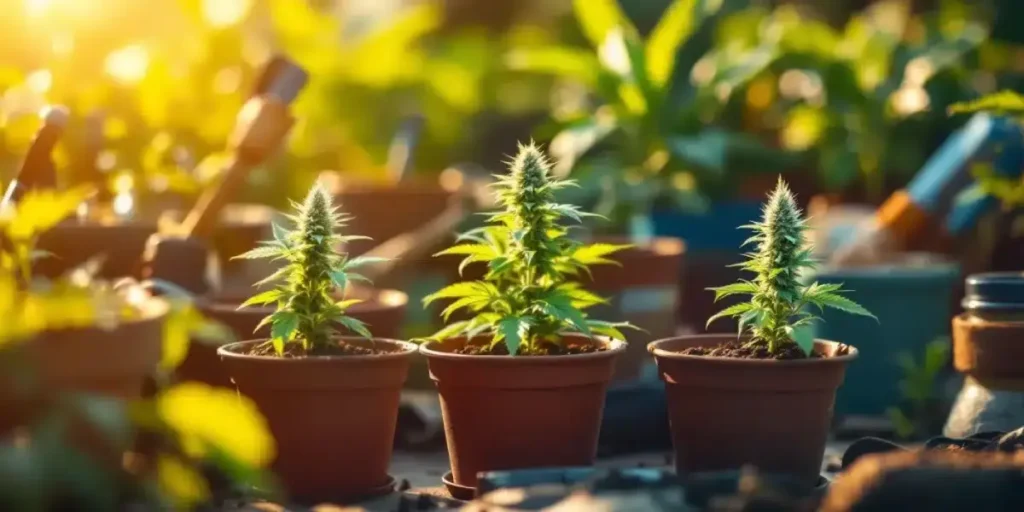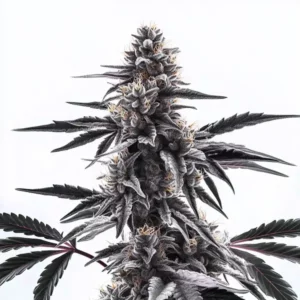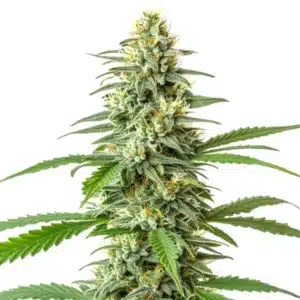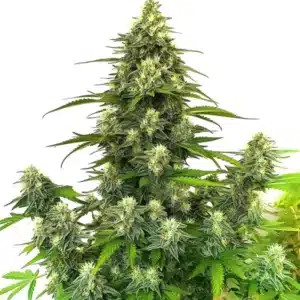Growing cannabis, particularly autoflowering strains, presents unique challenges and opportunities. Among the most frequently asked questions is whether or not it’s possible to clone autoflowers. In this comprehensive guide, we’ll explore the intricacies of cloning autoflowers, diving deep into the pros, cons, and potential outcomes of this practice.
Knowing Autoflowering Cannabis
What Makes Autoflowers Different from Photoperiod Strains?
Autoflowering cannabis strains have revolutionized the way growers approach cannabis cultivation. Unlike photoperiod strains, which rely on changes in light cycles to trigger flowering, autoflowers begin their flowering phase based on age. Typically, within 2 to 4 weeks from germination, these plants will automatically transition from the vegetative stage to flowering.
This key difference is due to the genetic influence of Cannabis ruderalis, a species native to regions with harsh climates and short growing seasons. Ruderalis evolved to flower quickly, ensuring survival in challenging environments. As a result, autoflowers are hardy, resilient, and perfect for growers looking for a fast turnaround. However, this same characteristic makes cloning autoflowers particularly challenging, raising questions about the viability and effectiveness of creating auto flowering clones in home or commercial grows.
The Growth Cycle of Autoflowers
The growth cycle of autoflowers is compact, usually ranging from 8 to 12 weeks from seed to harvest. This short life cycle means that autoflowers spend less time in the vegetative stage compared to photoperiod strains. As a result, they have less time to develop robust root systems and foliage before they start flowering.
The rapid transition to flowering is both a blessing and a curse. On the one hand, it allows for multiple harvests in a single season, especially in climates with short summers. On the other hand, it limits the window for interventions such as cloning, training, or correcting growth issues.
Why Cloning Autoflowers Is Challenging
Cloning, in general, involves taking a cutting from a mature plant and encouraging it to develop roots, effectively creating a genetic duplicate of the original plant. This process works well with photoperiod strains because they can remain in the vegetative stage indefinitely, allowing the cutting to establish roots and grow before the flowering phase begins.
In contrast, autoflowers operate on a fixed timeline. Once they enter the flowering stage, there’s no turning back. If you take a cutting from an autoflower, the clone will be the same age as the mother plant, meaning it will likely enter the flowering stage before it has time to develop a strong root system. This results in stunted growth, lower yields, and a much less efficient use of space and resources.
Promos & Deals
The Science Behind Cloning Cannabis
How Cloning Works in Traditional Cannabis Plants
Cloning cannabis involves selecting a healthy, mature plant in the vegetative stage, cutting a branch or shoot, and placing it in a growing medium. With the right conditions humidity, warmth, and light the cutting will develop roots and eventually grow into a full plant.
In photoperiod strains, this process is relatively straightforward because the plant’s growth cycle can be controlled by manipulating light exposure. The cloned plant remains in the vegetative stage until it is large and healthy enough to be transitioned into flowering. This allows growers to create multiple copies of a single plant, ensuring consistency in yield, potency, and overall plant characteristics.

Challenges of Cloning Autoflowering Strains
Cloning autoflowering strains is far more complex due to their predetermined life cycle. The primary challenge is the fact that the clone will continue to age at the same rate as the mother plant. This means that even if the cutting successfully roots, it will still enter the flowering stage at the same time as the mother plant, regardless of its size or root development.
This accelerated timeline often results in a small, underdeveloped plant with minimal yields. Moreover, because the clone’s life cycle cannot be extended, there’s little room for error. Any delays in rooting or growth can severely impact the final harvest.
Another challenge is the fact that autoflowers are generally more sensitive to stress than photoperiod strains. The process of taking a cutting and encouraging it to root can introduce significant stress, which autoflowers may not handle well, leading to further stunting or even death of the clone.
Potential Benefits of Successful Autoflower Clones
While cloning autoflowers is fraught with challenges, it’s not entirely without benefits if successful. Cloning can allow growers to preserve a particularly desirable plant phenotype. For instance, if you find an autoflower strain with exceptional flavor, potency, or resilience, cloning could theoretically allow you to replicate those traits in future crops.
Additionally, successful cloning could reduce the need to germinate new seeds for each grow cycle, potentially saving time and resources. However, these benefits are often outweighed by the risks and limitations associated with cloning autoflowers.
Step-by-Step Guide to Attempting Autoflower Cloning
Preparing Your Mother Plant for Cloning
If you’re determined to clone an autoflower, the process starts with selecting the right mother plant. Choose a plant that is healthy, robust, and in the early vegetative stage. The earlier you take the cutting, the better chance it has of developing roots before the flowering stage begins.
Ensure that the mother plant is receiving optimal care proper lighting, nutrients, and watering so that the cutting you take will be as strong as possible. Avoid any form of stress to the mother plant in the weeks leading up to taking the cutting, as this could reduce the clone’s chances of success.
Techniques for Cutting and Rooting Autoflower Clones
To take a cutting, use a sterilized blade to cut a 4-6 inch branch from the mother plant, ideally from a lower branch that is still in vigorous growth. Immediately place the cutting into a cup of water to prevent air bubbles from entering the stem, which can inhibit rooting.
Next, dip the cut end into a rooting hormone to encourage root development, then place the cutting into a pre-moistened growing medium, such as rock wool or peat pellets. Keep the environment humid around 70-80% humidity and maintain a temperature of 70-75°F (21-24°C).
Lighting should be gentle; use a low-intensity grow light or place the clone under indirect light to avoid stressing it. Within 1-2 weeks, if successful, the cutting should begin to develop roots.
Managing Expectations: What to Expect from Autoflower Clones
Even with the best care, it’s important to manage your expectations when cloning autoflowers. The clone will likely remain small, and its yield will be significantly lower than that of a seed-grown plant. The short vegetative period of autoflowers leaves little time for the clone to establish itself before flowering begins, leading to a final product that is often less potent and less abundant.
In many cases, growers find that the effort involved in cloning autoflowers isn’t justified by the results. However, for those determined to experiment, the process can still offer valuable insights into cannabis cultivation and the behavior of autoflowering strains.

Alternative Methods to Cloning Autoflowers
Producing Seeds: The Alternative to Cloning
Given the challenges of cloning autoflowers, many growers turn to seed production as an alternative. By allowing a female autoflower to be pollinated, you can produce seeds that will carry the genetic traits of the parent plants. While this method doesn’t guarantee identical offspring, it does allow you to preserve the genetics of a particularly desirable plant.
Breeding autoflowers can also introduce genetic diversity, potentially resulting in new and improved strains. For those interested in cannabis breeding, producing seeds can be a rewarding and productive alternative to cloning.
Using Feminized Autoflower Seeds for Consistency
Another alternative to cloning is using feminized autoflower seeds. These seeds are bred to produce only female plants, which eliminates the guesswork of sexing plants and ensures that your grow space is used efficiently. Feminized seeds also allow for greater consistency in your crops, as each seed will produce a plant with similar traits to the others.
Using feminized seeds provides many of the same benefits as cloning such as uniformity in growth and yield without the complications and limitations of cloning autoflowers. Additionally, feminized seeds are widely available and relatively affordable, making them an accessible option for most growers.
Exploring Tissue Culture as a Cloning Alternative
Tissue culture is an advanced propagation technique that involves growing plants from small samples of plant tissue in a sterile, nutrient-rich environment. While tissue culture is more complex and requires specialized equipment, it offers several advantages over traditional cloning, particularly for autoflowers.
Tissue culture allows for the preservation of plant genetics with a high degree of precision. It can also produce a large number of plants from a single tissue sample, making it an efficient method for replicating a desirable autoflower strain.
While tissue culture is not commonly used in home growing due to its technical demands, it represents a promising area of research and development in cannabis cultivation, particularly for those interested in preserving and propagating autoflower strains.
Pros and Cons of Cloning Autoflowers
Advantages of Cloning Autoflowers
Despite the challenges, there are some potential advantages to cloning autoflowers:
- Genetic Preservation: Cloning allows you to replicate a plant with particularly desirable traits, such as high potency, unique flavors, or exceptional resilience.
- Consistency: Successful clones will produce plants with the same characteristics as the mother plant, leading to a uniform crop.
- Potential Cost Savings: If cloning is successful, it could reduce the need to purchase new seeds for each grow cycle.
Disadvantages and Risks of Cloning Autoflowers
The disadvantages and risks often outweigh the benefits when it comes to cloning autoflowers:
- Stunted Growth: Due to the fixed life cycle of autoflowers, clones often have insufficient time to establish roots and grow before flowering begins, resulting in small, underdeveloped plants.
- Lower Yields: Autoflower clones typically produce much lower yields compared to seed-grown plants.
- High Failure Rate: The stress of cloning combined with the rapid life cycle of autoflowers leads to a high failure rate, making the process less efficient and more labor-intensive than growing from seeds.
- Lack of Time for Recovery: Autoflower clones do not have the luxury of extended vegetative growth to recover from the stress of cloning, further limiting their potential.
When to Consider Cloning Autoflowers (and When Not To)
Cloning autoflowers is generally not recommended unless you are an experienced grower with a specific reason for wanting to replicate a particular plant. Even then, the results may not justify the effort.
However, if you have a rare or unique autoflower strain that you wish to preserve, and if you’re willing to experiment and accept the risks, cloning can be an interesting challenge. In most cases, though, growers will find more success and satisfaction by focusing on high-quality seeds and exploring alternative propagation methods.
Genetics in Cloning Success
How Genetics Influence Cloning Viability
When it comes to cloning cannabis, genetics play a crucial role in determining the success rate and overall viability of the clones. Different cannabis strains have varying levels of resilience, growth patterns, and stress tolerance, all of which can impact the likelihood of successful cloning. For autoflowers, the influence of genetics is even more pronounced due to their unique growth characteristics.
Autoflowering strains inherit their ability to flower based on age rather than light cycles from their Cannabis ruderalis ancestry. This genetic trait makes them less dependent on environmental factors for flowering but also limits their vegetative phase, which is essential for root development in clones. As a result, the genetics of an autoflower strain can greatly influence its response to cloning attempts.
Some autoflower strains may have a slightly longer vegetative phase or more vigorous growth, which could improve the chances of a successful clone developing into a productive plant. However, even with favorable genetics, the fundamental challenges of cloning autoflowers remain significant, and the success rate is typically lower than with photoperiod strains.

Selecting the Right Autoflower Strain for Clone
If you’re determined to experiment with cloning autoflowers, selecting the right strain can make a difference. Here are some factors to consider when choosing an autoflower strain for cloning:
- Growth Vigour: Strains that exhibit vigorous growth during the vegetative phase are more likely to produce clones that can develop roots quickly and efficiently before entering the flowering stage.
- Longer Vegetative Period: Some autoflowers have a slightly extended vegetative period, giving clones more time to establish themselves before flowering. These strains might offer a better chance for successful cloning.
- Resilience to Stress: Autoflower strains that are more resilient to stress, such as fluctuations in light, temperature, and humidity, are better candidates for cloning. These strains are less likely to suffer severe setbacks during the cloning process.
- Genetic Stability: Cloning is more likely to be successful with genetically stable strains that consistently produce uniform plants. Strains with stable genetics are less prone to unexpected variations that can complicate the cloning process.
By carefully selecting an autoflower strain with these characteristics, you can slightly improve your chances of achieving a viable clone. However, it’s important to remember that even with the best genetics, the inherent challenges of cloning autoflowers mean that results may vary, and expectations should be tempered accordingly.
FAQs About Can you clone autoflowers
Can You Get the Same Yield from a Cloned Autoflower?
No, it’s unlikely that a cloned autoflower will produce the same yield as a seed-grown plant. Due to the shortened life cycle and the stress of cloning, autoflower clones tend to be smaller and less productive.
How Long Does It Take for an Autoflower Clone to Root?
If successful, an autoflower clone can take anywhere from 7 to 14 days to develop roots. However, this rooting period overlaps with the plant’s natural progression toward flowering, leaving little time for vegetative growth.
Are There Specific Autoflower Strains Better Suited for Cloning?
Some autoflower strains may be slightly more resilient and tolerant of stress, but in general, all autoflowers present similar challenges when it comes to cloning. Strains that have a longer vegetative period or are particularly vigorous may offer a slightly better chance of success, but the fundamental limitations remain.
What Are the Best Conditions for Attempting to Clone an Autoflower?
The best conditions for attempting to clone an autoflower include maintaining high humidity (around 70-80%), moderate temperatures (70-75°F or 21-24°C), and gentle, indirect light. Ensuring that the mother plant is healthy and in the early vegetative stage will also improve the chances of success.
Can You Use the Same Cloning Techniques for Autoflowers as for Photoperiod Plants?
While the basic cloning techniques (cutting, rooting hormone, etc.) are similar, the timing and expectations are different. Autoflowers require a more precise approach due to their fixed life cycle. The same techniques may not yield the same results as with photoperiod plants, where the vegetative stage can be extended.
Is It Worth the Effort to Clone Autoflowers?
For most growers, the effort to clone autoflowers is not worth it, given the low yield and high failure rate. However, it can be an interesting experiment for experienced growers or those looking to preserve specific genetics, as long as expectations are managed.
How Does Cloning Autoflowers Affect Potency?
Cloning autoflowers typically results in smaller, less developed plants, which can affect potency. The lack of time to fully develop during the vegetative stage and the stress of cloning can lead to lower cannabinoid levels and less aromatic profiles compared to seed-grown plants.















